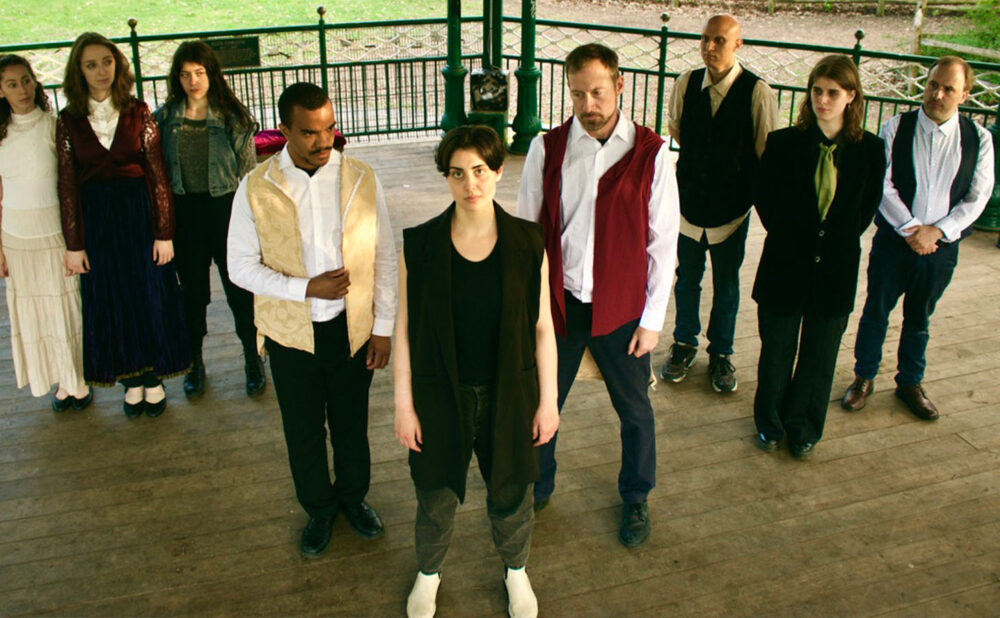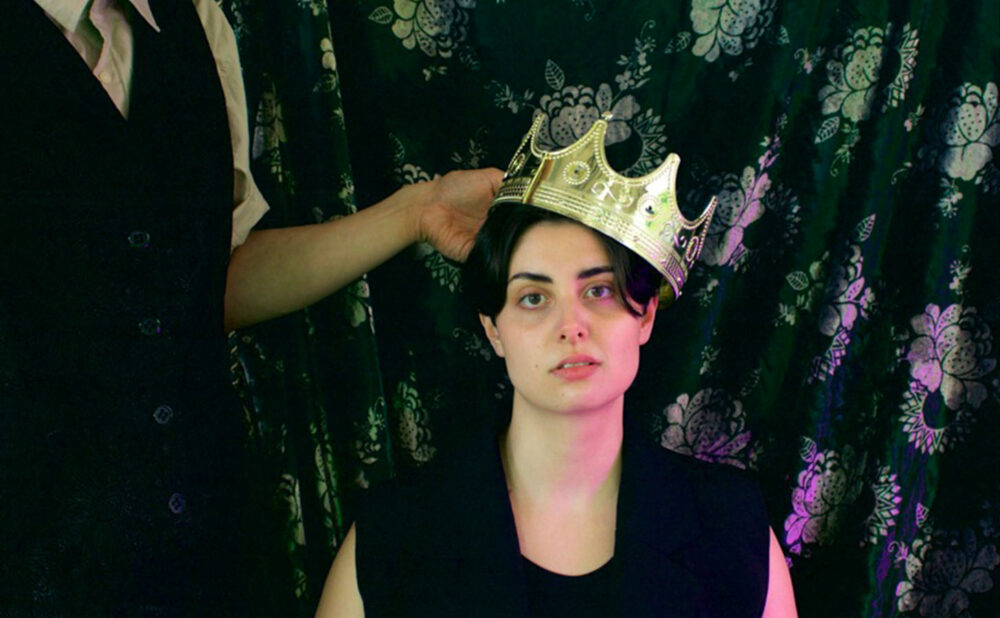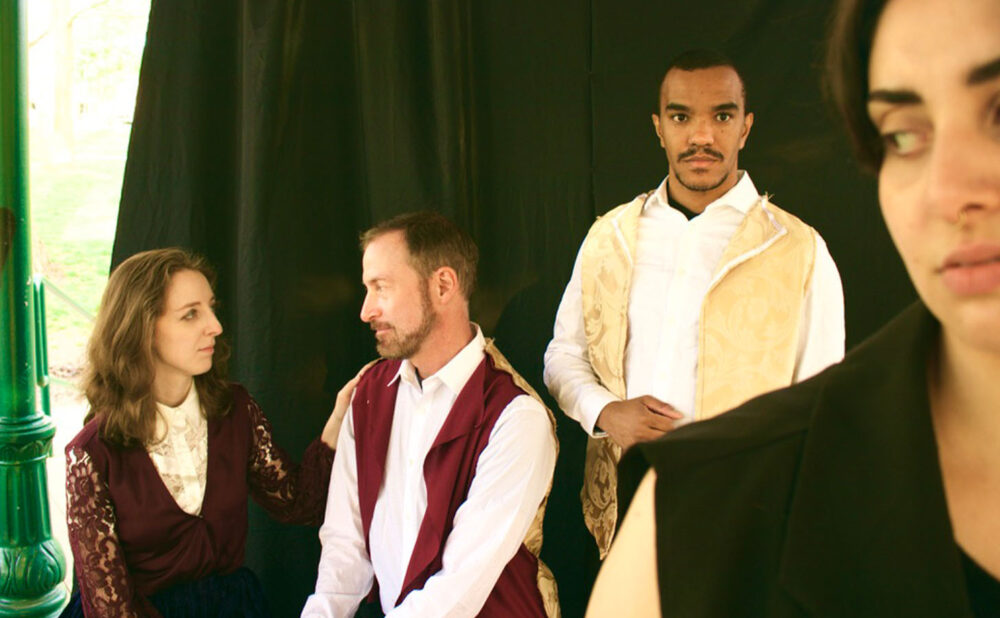Review: Cool concept in need of further growth at Panoply’s ‘Prove a Villain’
Toronto collective updates ableist Shakespeare play
What: Prove a Villain
Where: Kew Gardens Park, 2075 Queen St. E. (June. 11 – 16) and Historic John McKenzie House, 34 Parkview Ave. (June 21 – 23)
When: Now, until Sun., June 23
Highlight: A queer, disabled-led production looking to reinvent an outdated text
Rating: NN (out of 5)
Why you should go: Bard in the park is always a delight.
I’M A SUCKER FOR some queer Shakespeare, especially in the wake of Stratford’s Richard II last season.
Directed by Alyssa Marie Pothier and staged in Kew Gardens Park in a little gazebo turned stage, this show is on a quest to reinvent the problematic and ableist Richard III. This collective puts disabled creators and artists at the forefront of this process, taking themes of oppression and using their own lived experiences to tell the story. At 90 minutes with no intermission (which did run overtime without a delayed start), there is gusto but also a need for more development.
Don’t get me wrong: this lens for Richard III works exceedingly well. The script by co-writers Alyssa Pothier, Sienna Singh and Paige Madsen (also playing Richard and Queen Elizabeth respectively) takes advantage of the original text to make it work with creative casting. They also incorporate Shakespeare references galore, taking inspiration from a variety of his texts to create their unique take. As someone who is a self-proclaimed Othello fan, I was surprisingly pleased to see the Anne/Richard parallels they were drawing out of the Desdemona/Othello scenes.
The script alone, alas, can’t carry the whole production. Unfortunately, this piece teeters slightly on the amateur, feeling more like a devised project than something with a clear directorial hand. There is atmosphere for sure, with the live soundscapes created by the actors and the flow of scenes weaving in and out of each other in its transitions. On the other hand, as long dramatic scenes unfold with minimal to no strong blocking choices, it feels under-directed. In a more contemporary play, this might have gone unnoticed, but with Mr. William’s twisty words, this is definitely felt in the emotional impact of the piece.
Performances were all full of energy, but varied in believability. Lizzie Moffatt, playing Lady Anne, is an absolute stand-out, navigating the different notes of the grieving widow with power and vulnerability. A shoutout is due to Trevor Cartlidge and Henrique Santsper for their rather delightful performances as two 11-year-old boys (among many other roles they fill in for). Singh’s portrayal of Richard III, though full of passion, reads a bit one-note. They are an exceedingly engaging speaker, and their voice carries clearly in the rather loud park, which is no small feat. But their performance lacks variety and a clearly defined arc from beginning to end.
The moments that felt most whole in terms of performance, message and artistic direction were the beginning and the end of the performance. The actors essentially became a chorus and addressed the audience directly about the tale they weave. There’s a beautiful unity of ensemble, moments of choral speaking and use of movement that is crystal clear. This script and collective definitely have a bright future ahead of them; they just need a little more growth and a sharper directorial touch.







